I’ve known Jason Falls for some time now and consider him a good friend. He’s just all-around good people. The Southern accent doesn’t hurt either. 🙂
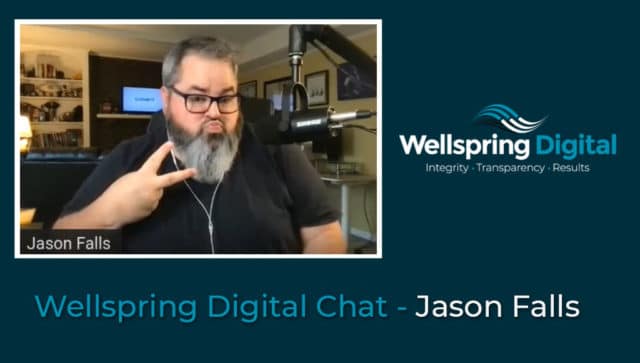
Jason’s book, The Rebel’s Guide to Email Marketing, co-written with uber-dude DJ Waldow, is one of my all-time favorites. I am currently reading Winfluence and it is looking to be another favorite. Definitely check that one out.
In this chat, we dive deep into…
- The reality of influencer marketing vs. perception
- Are companies ignoring their own influencers?
- Micro and Nano influencers and their often ignored impact
- Tying influencer marketing to business goals
- Email marketing and cold emails
- The future of influencer marketing
Shall we? We shall!
WARNING: This video contains peace signs and duck lips!
Digital Transcript (Edited for Readability)
Introductions
Jon-Mikel Bailey: Hi, kids, how are you doing? Are you having a good day? That’s good. I’m glad. I am Jon-Mikel Bailey and welcome to the Wellspring Digital Chat series where we manage to either confuse marketers and trick them into coming in on here or we’ve somehow conned them.
In some way, shape, or form, we’ve managed to convince these really top-notch marketers to come and talk to me. And I still can’t figure out how I’m pulling this off. But you know what, I probably shouldn’t have said that out loud.
Because now Jason is gonna go running away, screaming but anyway, Jason Falls has been a friend for some time now. I’ve been following him on all social channels for quite a while. And why is this? Because he’s awesome. He knows his stuff and is a great resource for influencer marketing and email marketing.
He’s written a few books on both. So Jason, welcome. Please take a moment to introduce yourself to these fine, folks.
Jason Falls: Sure thing. Thanks, Jon. Great to be on the show. You didn’t have to cajole or coax or bribe me to be here. So I’m glad to be here. Yeah, as Jon said, I’ve written a few books, one on social media strategy, one on email marketing, and then one on influencer marketing, which is my latest book.
I work at an advertising agency called Cornett in Lexington, Kentucky, we’re a full-service advertising agency. I handle the owned and earned part of how the client creative gets out there. So everything from PR to you know, social media, organic social media, I work very closely with our paid team on paid social and other campaigns.
But influencer marketing is what I spend a lot of my time doing because it’s such a powerful extension of a good marketing plan these days. I’m a PR guy by trade. So I spent 15 years as a public relations guy and media relations guy in college athletics before I got into the mainstream advertising, and marketing / PR world.
And when I landed at an advertising agency in 2005, that was when social media was first starting, brands were starting to go, what is this and what are blogs and what are social networks? And I, just because of my personal usage of them, kind of understood them, and kind of found myself in a great place of opportunity.
So I started working with some really nice brands then, and kind of just rode the wave. And that’s what I’ve been doing for the last 15, almost 20 years.
Jon-Mikel Bailey: So you mentioned the terms owned and earned and I am contractually obligated to Gini Dietrich to mention the PESO model every time someone says any of those terms. So there you go, Gini, go ahead and send me my check.
Jason Falls: She is sending you a check. Yeah, she didn’t send me checks.
Jon-Mikel Bailey: I’ll edit that part out. So I read your book, The Rebels Guide to Email Marketing, co-written with uber-dude, DJ Waldow back in 2012. I mean 10 years ago, and I still use some of the tricks that you discussed in that book, to this day.
And Winfluence, your influencer marketing book is definitely next on my must-read list (reading it now and it is awesome!). And I want to pick your brain on both influencer marketing and email marketing. So Jason, are you ready?
Jason Falls: I’m ready. Let’s do it.
Jon-Mikel Bailey: Let’s do it. All right.
The Reality of Influencer Marketing vs. Its Perception
Jon-Mikel Bailey: So I think, you know, many marketers might still think of influencers as the TikTokers, the Grammers, the idiot, I mean, the people who have millions of followers. You’re defining influencers as “anyone who might sway your decision to purchase a product or service.” So do you think marketers are missing opportunities? You know, just because of that misconception?
Jason Falls: I definitely think they are. And in fact, that was really the impetus for the book. The thing that kind of flipped me over from talking about and thinking about and practicing influencer marketing to actually writing a book about it was, I saw there was this period of time, I think it was in 2019. Where story after story in the mainstream media about influencers were negative.
It was this influencer, photoshopped clouds and their Instagram pictures and they’re being called out for being fake and this influencer, you know, plagiarize stuff. And this influencer, you know, fake, bought their followers, all that kind of thing.
Jon-Mikel Bailey: I remember Cloud Gate.
Jason Falls: And so and so I saw these stories. And I thought, why is the mainstream media focusing on this little sliver of influencer that cheats or that is bad or that is negative?
When every day I’m working with influencers, probably 85 to 90% of the people who are “influencers.” And now the sort of in term is for content creators to get away from that negativity around the term influencer. But I’m working with all these fantastic content creators who have engaged audiences who partner with me, for our clients to do really amazing work to persuade people to go buy products and services and try things and change their mind on certain issues and whatnot.
And so I just got really frustrated that the mainstream media was portraying influencer as a negative thing when I know it to be a very, you know, fruitful path for people to use as marketers. And so that was the impetus it was kind of throwing down the gauntlet and saying, wait a minute, you’re looking through this little tiny peephole at a huge world and you’re not seeing all the good.
You’re just focusing on the bad the influencers that they mostly like to lampoon and make fun of, or what I call the “peace sign, duck lips influencers,” the ones who are, you know, the selfie-takers, and those have a tendency to be superficial, they’re not, there’s not a whole lot of engagement, they think they’re famous, and they’re flashes in the pan, they don’t last very long.

But the influencers that create really useful engaging content, like Derek Wolfe, had over the fire cooking which has for years taught people how to grill really elaborate meals outdoor over the fire, cooking out on your grill, etc.
And so I worked with a bourbon brand once upon a time and our audience kind of overlapped with his audience in a really nice way. There was a lot of, you know, not bro humor, but you know, sort of, you know, “manly conversation.” He wore flannel and jeans and stuff. And it just kind of he looked the part and it was very outdoors-oriented.
And so we partnered with him to test and did a few sponsored posts, and our audience really liked him and his audience really liked us. And so we ended up actually going back to him and saying, “why don’t we upgrade your video? Why don’t we come in and produce like a mini TV series for you so that instead of you hanging your iPhone, on overtop of a grill, (which I don’t know how he does it doesn’t melt) but instead of doing that, let’s come in, and let’s have some professional sound and the cameraman?
Let’s direct an episode where you’re talking to somebody else, another influencer. And so we did this like little four-part series and ended up being two or three years’ worth of stuff. But that kind of partnership was like, nobody wants to hear from a bottle of bourbon, you want to drink a bottle of bourbon, but you don’t hear from it. But you’ll be glad to hear from someone who can teach you how to grill out really well, while they’re sipping on a bottle of bourbon.
So that’s kind of how we did that. And it worked. And that’s kind of how we approach influencer partnerships at Cornett.
Jon-Mikel Bailey: So it’s gonna take everything in me to not use the peace sign, duck lips moment from this interview as your isolate. (clearly, I’m 12)
Are Companies Ignoring Their Own Influencers?
Jon-Mikel Bailey: So I’m in a recent podcast I just listened to. And by the way, everyone, please check out Jason’s podcast, it’s very good and chock full of great stuff. But in a recent one, you say, “if someone calls you an expert, you’re an expert. If you call yourself an expert, you’re an asshole.” That is awesome, first of all, but it also could possibly create a problem in my mind.
I think this notion may be preventing certain companies from celebrating their own internal experts. I mean, do you agree or do you think, you know, humility, or even some sort of shyness might be getting in the way of building an influence or within your own company?
Jason Falls: Well, I think you raise a good point. Because my proclamation of that dates back to 2009 when we were having the social media expert conversation. But my intention there was really talking about the individual. If Cornett wants to promote me as “he’s a social media expert,” as long as I’m not the one saying it through the megaphone, and somebody else is.
If it’s a third-party endorsement, even if it is my own company, then I think it’s got credibility. It makes sense. But I’ve to take the the analogy and whatnot a little further and a little deeper, and I’ll try to be as clean as I can with this.
Jon-Mikel Bailey: Do what you got to do.
Jason Falls: But if you call yourself an expert, it’s like you calling yourself good in bed. You don’t know that you’re good in bed. That’s somebody else’s opinion. Right? You can say somebody said I was good in bed, or somebody said I was an expert. You can say I have an amount of expertise, but to say you’re an expert, I think throws that ego right in someone’s face.
And so I don’t think that in the case of a company elevating their own staff or employee and saying he is our expert on this or she is an expert on that. I don’t find a problem with that. Because again, there’s someone else making that call someone else making the decision.
Jon-Mikel Bailey: I guess what I’m asking, though, is do you think that companies are, are so worried about being seen as being, you know? What is it imposter syndrome or being pompous or whatever, that they’re, that they might be getting in their own way? And thinking? Well, I don’t know. Yeah, we have experts, but they’re not like expert experts, or, you know, they’re kind of talking themselves out of it.
Jason Falls: Yeah, to that point, I think you’re absolutely right. There are a lot of people out there in business. And I think this is, you know, whether it’s imposter syndrome, or whether it’s just a slight lack of confidence, you know, you see what other people are doing, and you think, Oh, my gosh, I don’t have that kind of wisdom. I don’t have those experiences, I don’t work in that industry, I don’t work in that market.
But whatever it is, you do, like if you’re a pipefitter, and you know, hey, man, I know how to fit pipes, and doesn’t matter what size they are, I can fit them sumbitches like crazy, that’s I’m a pipefitter, and I’m good at it.
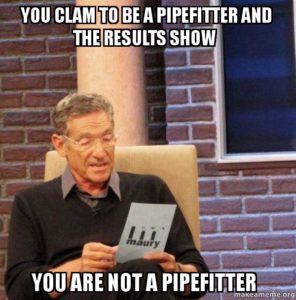
Jon-Mikel Bailey: No innuendo there at all.
Jason Falls: Exactly. There might be, you know, 100 other pipefitters out there. And they may know a bunch of different stuff. But you know, the core discipline of pipefitting. So I think it’s absolutely imperative for any business, to be able to have that confidence to stand up and say, “we are really good at this, this is what we know.”
Now, I don’t do it in that market, or I haven’t done it over here. But we know the industry, we know our business, we know the craft that goes into what we do whatever that is. And if we are faced with a challenge that we don’t understand, we roll up our sleeves and figure it out, right. That’s how you get better as a business.
So I think everybody’s got their core little discipline of what they know. And they should always be confident about that. And don’t worry about there being other people out there that know other things, you’re not worried about them, you’re worried about the people who want what you do.
Jon-Mikel Bailey: I mean, just look at YouTube, and there are, you know, tons of experts, they’re like, anytime you need to do anything, you know, home maintenance related, it’s there, it’s crazy. I actually really like to refer to myself as an expert, really a guru, or actually, Ninja guru.
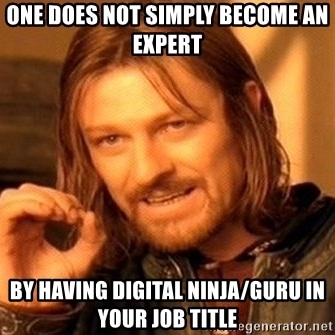
Jason Falls: Those are good titles.
Jon-Mikel Bailey: I have them all in my LinkedIn profile.
Micro and Nano Influencers and Their Often Ignored Impact
Jon-Mikel Bailey: So I think one, just stick with influencers for a second, I think one common mistake that many companies, especially B2B companies make is they ignore the micro and nano influencers, I think they could get a serious return on working with these types. I mean, do you agree with this, but you know, are they missing this opportunity?
Jason Falls: Yeah, and I think there’s a huge gap. And I’m not exactly sure how to describe the gap. I haven’t been able to put a whole lot of thought around this yet. But there is a growing gap between the value that you can get out of a micro-influencer and the value you can get out of a large one. Because the mid-tier to mega to celebrity type influencers, they’re gonna get while the getting’s good. And so their prices just keep going up.
And I got a price quote the other day from someone who has 70,000 followers on Instagram, which is a respectable amount, it’s an interesting niche for a client that we’re working with. And for like three pieces of content, this person wanted $15,000. And I’m like, you cannot, there’s no math where you can prove to me that that is a smart investment.
I mean, the cost per actual person looking at the content, not even engaging with, looking at it is going to be, you know, 70, 80, 90 bucks per impression, which is nuts. And so I’m looking at all these, you know, mid-tier and up that are starting to charge more and more. And I’m more inclined to go back to my clients say, look, you’re not going to get the names, but I’m going to get people who create really good content, who have really engaged audiences who are going to respond to them.
And we’re going to have more of them. And so when you look at instead of spending $15,000, with this one Instagrammer, I can probably go out and find 25 that I can pay, you know, a few $100 to and give them some product, and they will be more than happy to do a partnership with a brand because I’m definitely going to pay them I’m not going to ask them to work for product alone, because I think that’s disrespectful to their time.
So I’m going to pay them something, they’re going to feel valued by the brand. It’s going to help them financially, I’m probably also going to give them product, and we’re going to start a conversation, a relationship that might lead to more. And so I think the micro-influencers and the nano-influencers, even the smaller ones are a really smart strategy.
It takes a lot more rolling up your sleeves and manual work because these tools don’t necessarily, these agencies don’t necessarily know or work on those types of people. But if you can find the right 20, to trump that $15,000, Instagrammer, you’re in a lot better shape, and there’s a lot more value there.
Jon-Mikel Bailey: I wonder if it’s actually going to get easier over time to work with those micro and nano influencers, whether through technology or just proven processes are, you know, whatever.
Jason Falls: Yeah, it probably will. But you also have to remember that the micro-influencers want to be mid-tier influencers, they’re all aspirational to a degree, so some of them are gonna graduate out. And so…
Jon-Mikel Bailey: I’m gonna be a star!
Jason Falls: Exactly your challenge. Your challenge in that situation is you’ve got to watch a, they’re the saturation rate of their content, how many sponsored posts are they doing compared to their regular organic stuff? Because if you start to get to two and three and four sponsored posts a week, on certain platforms, it’s like, you’re getting kind of advertising spammy?
Well, when you start to see that increase, you also start to see a corresponding decrease in engagement. So someone who has 1000 followers and a 10% engagement means that 100 people are going to interact with their content. But as they grow and as they also add more sponsored content to the thing that 10% is gonna go to seven and a half gonna go to five gonna go to three.
And when they get up to 100,000 followers, they’re gonna have like a .8, .9% engagement, and now all of a sudden, the math just doesn’t work, go find another, you know, 10,000 follower person with higher engagement rates.
Tying Influencer Marketing to Business Goals
Jon-Mikel Bailey: So that dovetails perfectly into my next question which is… I was just talking to Janet Driscoll Miller about the importance of aligning marketing goals with business goals. This is surely true with influencer marketing, with any kind of marketing really? How might influencer marketing align with a business goal? Is there more to it than just brand awareness?
Jason Falls: Oh, yeah, for sure. And when you talk about, especially when you’re talking about B2B influencer marketing, I would think that B2B is much less about brand awareness and more about finding the right influential expert within the industry. To help the customer understand all of the different phases in your funnel to help them to get from awareness to, you know, curiosity and interest in trial and consideration.
And so, I think there’s a heck of a lot more to it. I’ve used influencers, not to just drive awareness, which is, you’re going to measure that in a couple different ways. You know, what the impressions, what the reach was, maybe what the engagement was. But if you’re really trying to measure brand awareness, you’ve got to measure before and know “Okay, before we started, this many people were aware of us.”
And then you’ve got to measure again after and the only way you can really do that well is surveys and things like that. Not very many people are going to invest in that for a single influencer marketing campaign. So you try to replace surveys and consumer polls with maybe social listening, maybe you drive more buzz online, because of this, theoretically, you should, because you’ve got influential people online talking about you.
So you have to kind of measure awareness, but I’ve also used it for driving conversions, increasing follower counts, increasing email subscribers, increasing purchases, foot traffic, there’s lots of different ways that you can do that, you know, using UTM parameters, short URL codes, coupon codes, whatever. But then I think, you know, I’m a PR guy. So I also look at every influencer marketing campaign as an opportunity to change the market’s opinion, to sway them to think differently about something.
And it might be that your primary goal is to drive foot traffic into stores and purchase. That’s great. But I’m always looking at it from that communications angle of what’s the perception of the brand now, and what do we want it to be? If there’s a change that needs to happen? And so I’m always trying to work the messaging things through my influencers, to make sure the audience goes from thinking, “oh, that’s a brand with some cute ads, but I would never consider them.
I’m really interested in what they’re doing. They have a really interesting system that builds their product. And it’s probably higher quality. Like if I can change the mindset in that transaction as well. That’s big.
Jon-Mikel Bailey: It’s almost like a long-drawn-out Jedi mind trick.
Jason Falls: Now, that’s what we hope for.
Jon-Mikel Bailey: These are the products that you want.
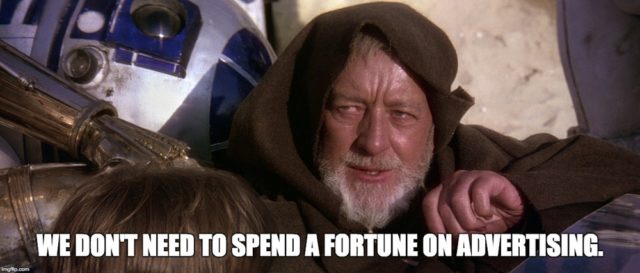
Email Marketing and Cold Emails
Jon-Mikel Bailey: So you mentioned email, and I want to pick your brain real quick on email marketing, specifically, cold email marketing. So we’ve been doing it very carefully, of course, and we’re seeing a tremendous return on our efforts. So how do you feel about cold email marketing? Is it something businesses should try or would you recommend them to stick to, you know, the double opt-in campaign?
Jason Falls: So I am going to answer that in a couple of different ways. We first of all, in terms of, you’re just going to add somebody to your newsletter, and they get the next newsletter as a cold email, I don’t advise that at all. Because that, by definition, that’s spam, they didn’t ask for the newsletter, they didn’t ask for the email, they didn’t give you their email address.
For that purpose, they didn’t opt-in at all. So if I all of a sudden have an email from whatever company in my inbox, I can probably find one. Now, if I looked close enough, they just added me because they bought a list or they found that email on my website and scraped it. That kind of cold email, I think, is by definition spam, it should never be sent, you should only add people to your newsletter that opt in and want to receive information from you.
The Value of Your Email Newsletter
Jason Falls: Your challenge as a marketer becomes convincing them that your newsletter has something so good, so useful, so engaging, so entertaining, or informative in it that they want to. And so you’re, if you’re a marketer, and you’re marketing your product, you also have to market your marketing. You have to say, “you know what, our email subscribers convert at a higher rate, we want more of those.”
Well, then we have to turn to maybe our social media followers or the public in general and say, “Hey, you should subscribe to this newsletter.” So you get to sell the newsletter before you can sell the product. And so it makes your marketing more complicated, but you’ve got to figure that out. However, cold emails, I do think work. In fact, I use them every single day for not just my clients, but for myself in my own things that I’m doing with the marketing, Podcast Network, or whatever.
And as a PR person, you have to do cold emails a lot anyway, just you’re trying to, you know, if I have a client that wants to be in Guns and Ammo Magazine, I don’t know anybody at Guns and Ammo magazine, so there’s gonna have to be some sort of cold communication there. The challenge then is, okay, how can I construct an email that will get them to open it and read it considering?
Well, first of all, it can’t be on an email marketing platform, it’s got to be a one-to-one thing, it’s got to be personalized, it’s got to have a headline that’s going to arouse their curiosity to make them open it. And you’ve got to put yourself in the position of the person receiving the email. 99% of people I think, don’t have time, don’t care, don’t want to read something that they have somebody they don’t know.
So in my personal opinion, and I write about this actually in Winfluence because I talk about using email to pitch influencers, in my personal opinion, the best cold email you can send is about two sentences long and contains the phrase “if you’re interested.” So for instance, I’ve literally pitched this before almost exactly. I think the email is actually in the book.
I was working with a company that was trying to promote $3,000 outdoor entertainment systems, not hard to sell, not hard giveaway, right? That’s a pretty attractive thing. So we had that on our side. But I literally picked about 15 or 20 influencers that they said we can actually give them one, we want to give them an outdoor entertainment system for their patio pool, whatever, and have them install it and then have them talk about it online.
So my pitch to these people who I did not know, these influencers, was “I’m working with a client who wants to put a $3,000 outdoor stereo system in your backyard. Are you interested? Question mark? Jason”
That’s it. Right? 100% response rate. Every single one of them responded. Some of them weren’t interested. Some of them didn’t have conflicts with other, you know, electronics companies that couldn’t do it. But we ended up identifying I think it was eight people for that particular client. And this was a couple of years ago, this wasn’t at Cornett.
We identified eight people for who we installed $3,000 entertainment systems in their outdoor spaces. You know, they were also paid for their content and whatnot. But they got to keep the entertainment system, of course, and the client project saw a tremendous amount of lift. I mean, they got a lot of exposure for what they were doing. And they were very happy at the end of the day. And it was all because I kept that initial pitch really short and sweet.
Jon-Mikel Bailey: Yeah, and just to be clear, our cold emails are purely educational, we’re not doing any pitches whatsoever.
Jason Falls: Good.
Jon-Mikel Bailey: And then you know, if they opt-in great if they don’t.
The Future of Influencer and Email Marketing
Jon-Mikel Bailey: I really think that influencer marketing is just going to keep growing and growing. And I think that email marketing is going to keep you know, stay as relevant and important as ever. But I want to ask you if there’s anything in the future that you see coming that people should be prepared for, either with influencer marketing or with email marketing, or both.
Jason Falls: Yeah, I mean, there’s always going to be changes coming, and to accurately predict what they are is a fool’s game sure to try to do. But a couple of things, if you’re reading the tea leaves, I think that we can start to look for, and they actually tie nicely together. Right now, influencers are big on Instagram and Tiktok. And maybe YouTube and some others, you know, but those are the three big ones right now.
I think you’re gonna, however, the instability of those platforms, whether it be influencers are having their account shut down for weird reasons because Facebook’s last Instagram has instituted all these automatic triggers that if you write Trump a couple of times, they shut you down or whatever. I don’t know.
Owned Media Will See A Resurgence!
Jason Falls: There are a couple of ways that you can get in trouble, they’re automatic, well, if an influencer relies on their posts every day to make money, and Meta shuts them down, well, now they can’t make money anymore. So you’re going to start to see I think content creators are going to start to migrate back to sort of old school content and community approaches like having a blog or a website…
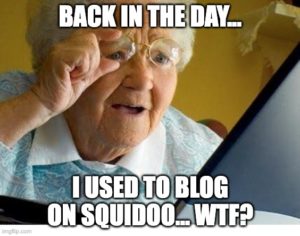
Where they have a community of people come and engage with them, they’re having an email list and email newsletter. Where they have the one-to-one connection, and they not just own the content, but they also own the community too. That’s why you’re seeing sites like fan base. And only fans, which is, you know, mostly adult, but not all adult.
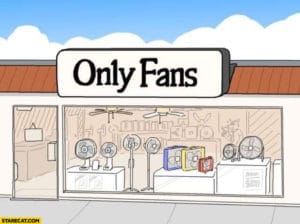
But it’s a subscription-based social media platform where you own the audience and access to the audience, and you can monetize that ownership. And you can have better control over the entire experience, not just put all your eggs in somebody else’s basket.
And so that’s why you’re seeing these subscription-based platforms, the sub-stacks of the world become more popular. So I think you’re going to start to see a shift back to the Creator as a publisher, not just as an influencer or a content creator.
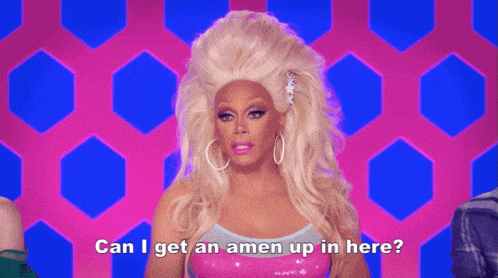
The Rise of the Actual Influencer
Jason Falls: And they’re going to have much more sort of closer to the bone, closer to home, you know, content platforms. Still gonna be on social networks, I’m sure that email marketing is gonna become more important to them. However, you’re gonna have to start to see the influencer marketing tools get better because right now if you go to an influencer marketing tool, they don’t tell you how many email subscribers somebody has.
They don’t tell you what traffic comes to their blog, They are not built for that. They’re built for social networks. So that’s got to get better. Once that happens. Now, I think you’re gonna start to see the signal rise from the noise in the influencer space a good bit. Because if I go and I see, hey, this person’s got 100,000 followers on Instagram, and they’ve got, you know, a pretty decent engagement rate.
But then I look at influencer number two, they’ve got 50,000 followers on Instagram, but they’ve got 25,000 email subscribers, and they get 50,000 visits a month to their website. And that’s a hell of a lot more attractive than somebody with a bigger audience on a social network over here to me. (BOOM!)
So you’re going to start to see the wheat and chaff kind of separate a little bit. And you’re going to have more actual influencers, people who are influential and have contact, direct contact with their audience. And then all these others who have this like superficial exposure influence, and that’s going to change the marketplace a good bit, I think.
The Metaverse, Web 3.0, NFTs, Cryptocurrency, and Other Things to Confuse Us
Jason Falls: The other X-Factor you’ve got to throw in there and you’ve got to think about is the metaverse, Web 3.0, whether it’s NFTs which confuse the crap out of me, or cryptocurrency which confuses the crap out of me even more, or virtual worlds, which confused me less.
And, and I think there’s a lot of opportunities there for brands, I think there’s a lot of opportunities there for influencers. I think that’s going to change the way influence happens. And it’s probably going to change the dynamic of how email works.
Because it’s going to be like, “Hey, you’ve got to subscribe to my email list. Because that’s how I communicate with people when and where I’m going to be in the metaverse where we can have a one-on-one conversation where you can come into a private room where I’m doing, you know, content for people in a virtual world.”
So email is always going to be there. It’s kind of the glue that holds everything together. Sure, you have to have an email address to sign up for all this stuff. So you have to have an email account. But I definitely think that web 3.0 and the evolution of how influencers trust these social networks are going to change things in the foreseeable future.
Jon-Mikel Bailey: I really my dream is to become, to sell clothes…
Jason Falls: Virtual Clothes or Real Clothes?
Jon-Mikel Bailey: Virtual clothes, in the metaverse. Mainly really like sportswear.
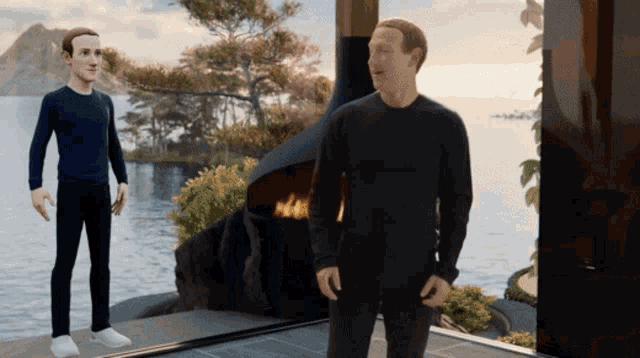
Jon-Mikel Bailey: Okay, so Jason, that last answer kind of warms my heart and it gives me hope for the future, at least in the world of digital marketing. So first of all, thank you for that second of all, thank you so much for being here. As I expected, there is a ton of great stuff in here that I really can’t wait to share. So so thank you so much for being here.
Jason Falls: Thanks for having me, man. It’s great. Great to be here. Great to do it.
Jon-Mikel Bailey: Awesome. Bye everybody cool, thank you.